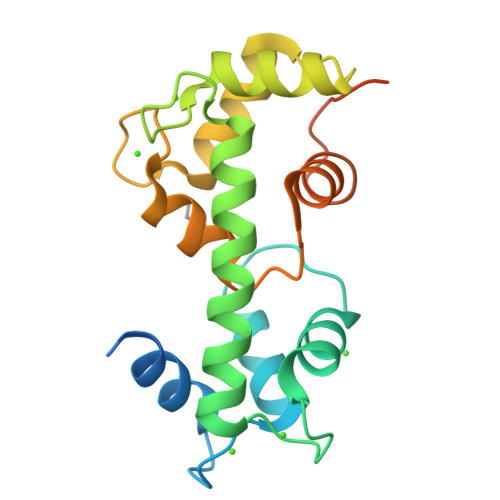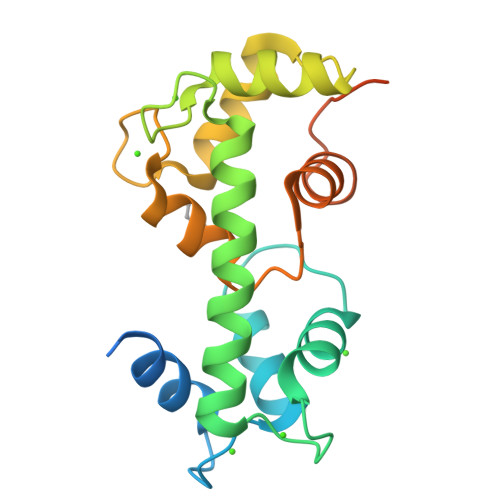A Self-Sequestered Calmodulin-like Ca(2+) Sensor of Mitochondrial SCaMC Carrier and Its Implication to Ca(2+)-Dependent ATP-Mg/Pi Transport.
Yang, Q., Bruschweiler, S., Chou, J.J.(2014) Structure 22: 209-217
- PubMed: 24332718
- DOI: https://doi.org/10.1016/j.str.2013.10.018
- Primary Citation of Related Structures:
4N5X - PubMed Abstract:
The mitochondrial carriers play essential roles in energy metabolism. The short Ca²⁺-binding mitochondrial carrier (SCaMC) transports ATP-Mg in exchange for Pi and is important for activities that depend on adenine nucleotides. SCaMC adopts, in addition to the transmembrane domain (TMD) that transports solutes, an extramembrane N-terminal domain (NTD) that regulates solute transport in a Ca²⁺-dependent manner. Crystal structure of the Ca²⁺-bound NTD reveals a compact architecture in which the functional EF hands are sequestered by an endogenous helical segment. Nuclear magnetic resonance (NMR) relaxation rates indicated that removal of Ca²⁺ from NTD results in a major conformational switch from the rigid and compact Ca²⁺-bound state to the dynamic and loose apo state. Finally, we showed using surface plasmon resonance and NMR titration experiments that free apo NTDs could specifically interact with liposome-incorporated TMD, but that Ca²⁺ binding drastically weakened the interaction. Our results together provide a molecular explanation for Ca²⁺-dependent ATP-Mg flux in mitochondria.
Organizational Affiliation:
Department of Biological Chemistry and Molecular Pharmacology, Harvard Medical School, Boston, MA 02115, USA.




















